Thien Hau Temple To Discover The Cultural And Spiritual Landmark Of Vietnam
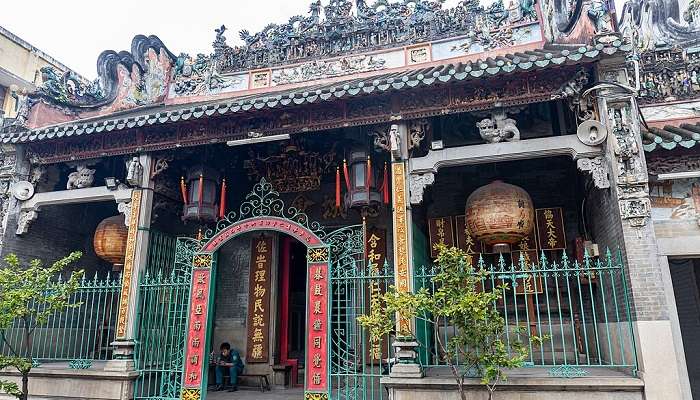
Located in the centre of Ho Chi Minh City, Thien Hau Temple offers a blend of the history and culture of Vietnam. In the 19th Century, Chinese immigrants built this vibrant temple dedicated to Sea Goddess Mazu, infamous for the protection of sailors and fishermen. As you enter the temple, you will be mesmerised by the fragrance of incense sticks. The intricate carvings and lifelike murals will offer a captivating and spiritual experience. The Thien Hau Temple in Vietnam not only provides a spiritual experience but will also give you an idea of the cultural diversity of the people of Vietnam.
Thien Hau Temple History
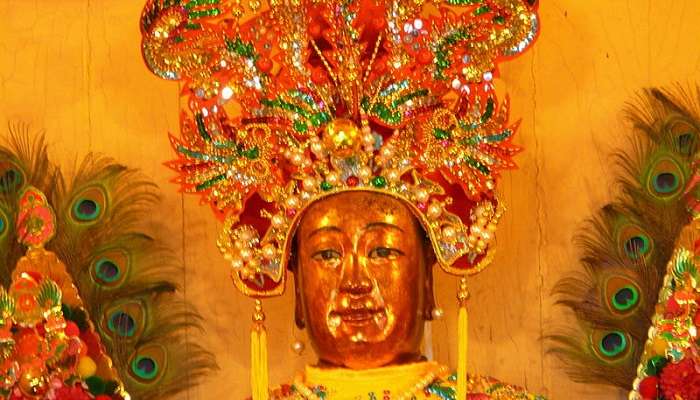
Thien Hau Temple’s history dates back to 1860, when Chinese immigration to Vietnam rose during the French Colonisation. The Chinese began settling in the Southern part of Vietnam, and with time the culture diversified in Ho Chi Minh City. The Chinese immigrants from Guangdong decided to build Thien Hau Pagoda to worship the Sea Goddess Mazu. Legends believed that Mazu had exceptional skills in predicting weather and assisted local fishermen during dangerous voyages. The Chinese people worshipped Mazu, believing the goddess protected the fishermen and sailors. In Vietnam, as the culture diversified, people started practising Mazuism with Taoism and Chinese Buddhism.
Must Read: Places To Visit In Ho Chi Minh City
Thien Hau Temple: Architecture
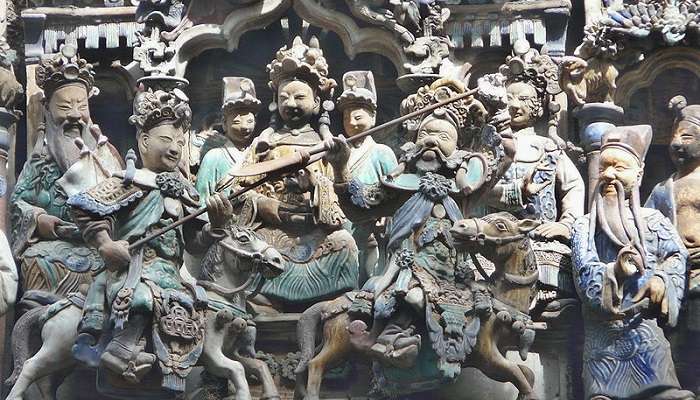
Located on the busy streets of Nguyen Trai Street, this temple is famous for its architectural brilliance. The visitors must pass through an iron gate to a tranquil courtyard. The roof of the temple is embellished with porcelain carvings of Chinese legends. You can also find lanterns and wooden models of Chinese theatre hanging over the entrance. The interior part of the temple is partially covered by the courtyard, and at a distance, you will find the altar dedicated to Mazu. The temple offers a tranquil environment filled with the fragrance of incense sticks, whilst the interior roof is adorned with porcelain replicas that depict the scene of a 19th- 19th-century Chinese city.
Thien Hau Temple: Nearby Attractions
Ho Chi Minh City is famous for its stunning landscapes, museums, and numerous attractions. For a more wholesome experience, explore these additional destinations near Thien Hau Temple in Vietnam.
1. War Remnants Museum
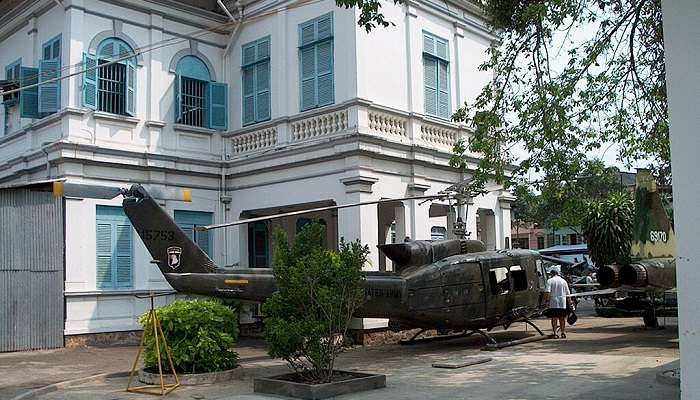
This museum is a must-visit to understand the US invasion of Vietnam. The museum showcases a vast collection of artefacts, photographs, and documents, generally written from a Vietnamese soldier’s perspective. In the courtyard, visitors can look at the types of military equipment, fighter jets, and military tanks. On the ground floor, visitors can find a collection of posters and photographs dedicated to the antiwar movement. Visitors can also witness the innovative weapons used by the Vietnamese such as flechette, artillery shells filled with darts. The Requiem exhibition on the second floor displays photos of the photographers who lost their lives during the war.
Suggested Read: Vietnam Golden Bridge
2. Cu Chi Tunnels
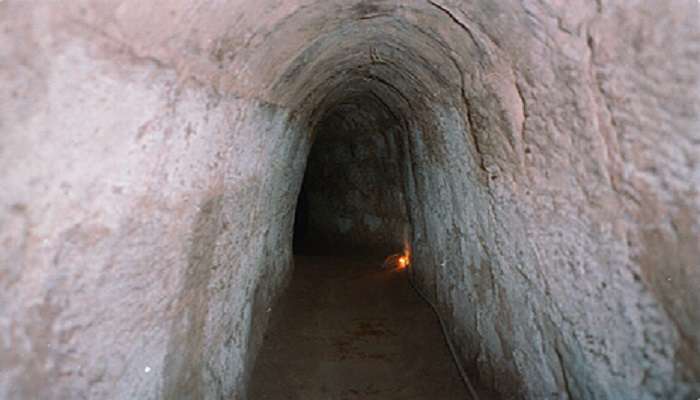
Located in the Cu Chi district of Ho Chi Minh City, a famous tourist attraction in Ho Chi Minh City. The Cu Chi tunnels stretch over 120 miles and offer a glimpse into the lives of Vietnamese soldiers during the war. The tunnels served as a living quarter and routes for communication for the soldiers. Visitors can explore the hidden trapdoors, storage, and improvised hospitals. The sites of Cu Chi tunnels also showcase the booby traps and remains of American military vehicles. Apart from this, the site offers a rifle range where you can fire shots of AK-47 and M16. Overall, a visit to Cu Chi tunnels will reflect the struggle of Vietnamese soldiers.
3. Notre Dame Cathedral Of Saigon
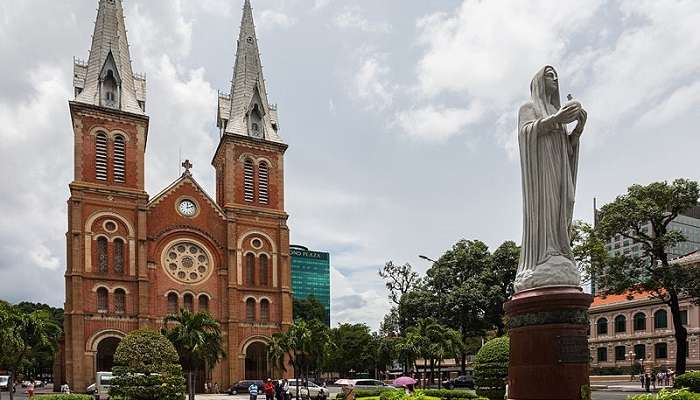
The French colonists built this cultural gem, and it is widely renowned for its architectural brilliance. The architecture of Notre Dame Cathedral was inspired by Romanesque architecture. Visitors can witness the Romanesque features such as well-defined red bricks, imported from Marseille, France. This picturesque Cathedral has two twin bell towers measuring 58 metres. The Visitors will come across a lively statue of the Virgin Mary. As visitors step inside the cathedral, they will experience a tranquil environment, as the window provides a divergence to the vibrant streets of Ho Chi Minh. Visitors can relax in the lush green garden surrounding the Cathedral.
Suggested Read: Temple Of Literature In Vietnam
4. Independence Palace
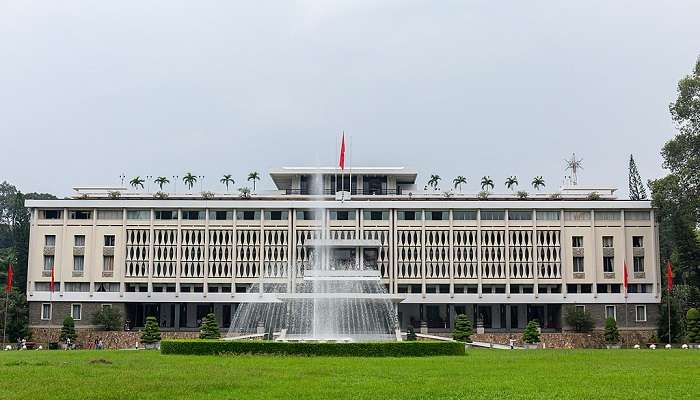
The Palace is also known as the Reunification Palace, which represents Vietnam’s cultural and traditional history. Visitors can find numerous ancient trees that date back to the French colonisation period. This place is a perfect match for people interested in architecture and history. At the main entrance, visitors will come across a war tank that is dedicated to the soldiers who lost their lives fighting for Vietnam’s independence. The Palace displays a film every 30 minutes to narrate the war story. The main attraction of the Palace is the room upstairs that has a bar with a relaxing leather sofa.
5. Saigon Central Post Office
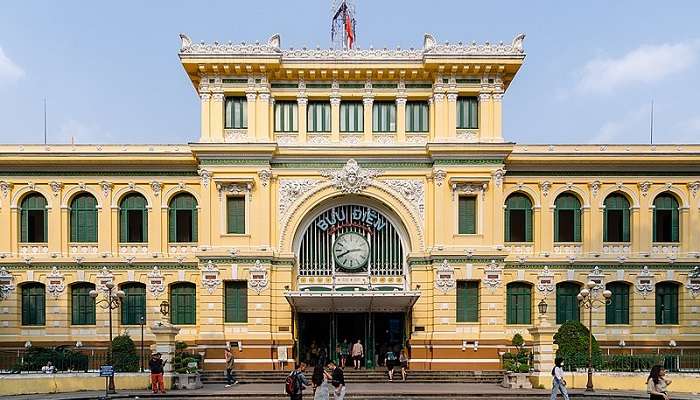
Nestled in the heart of Ho Chi Minh City, the Saigon Central Post Office is a historical gem. Gustave Eiffel created a brilliant architectural design for the Saigon Central Post Office. Visitors will see several plaques commemorating significant individuals at the entrance, including Morse, Ampere, Volta, Ohm, and Faraday. Once inside, they can see the iconic maps created after the post office was built.
Further Read: Places To Visit In Vietnam With Family
Ho Chi Minh City attracts a large number of crowds every year. The city offers vibrant nightlife as well as cultural and historical gems. One of them is Thien Hau Temple which depicts stunning Chinese-Vietnamese architecture. Besides the Thien Hau temple, Ho Chi Minh has various tourist attractions that preserve Vietnam’s rich history. Book your tickets for a trip to Vietnam and add these places to your itinerary to have the best trip of Your life.
For our editorial codes of conduct and copyright disclaimer, please click here.
Cover Image Credit: Balon Greyjoy for wikimedia commons
Frequently Asked Questions About Thien Hau Temple
What is the dress code for Thien Hau Temple?
Thien Hau Temple has no particular dress code but is suggested to dress modestly and respectfully when visiting a temple.
What is a pagoda in Vietnam?
A Pagoda in Vietnam refers to a place of worship for the Vietnamese people and symbolises the country's cultural and historical heritage.
Are there any special events or festivals held at Thien Hau Temple?
Thien Hau Temples often celebrate various events and festivals, including the Chinese New Year and Mazu's birthday.
Is there an entrance fee to visit Thien Hau Temple?
No, entry to Thien Hau Temple is free, but donations are often welcomed to support the temple's maintenance and activities.
What are the Thien Hau Temple's open hours?
Thien Hau Temple's open hours vary, but it is mostly open to the public from early morning until late afternoon or evening. Do check before planning your visit.
People Also Read:
Bhojeshwar Temple Poornathrayeesa Temple Man Mo Temple

Get ready to wander the world through amazing visual tours that we provide via our blogs and stories. As a content writer, I love sharing incredible travel experiences that inspire readers to plan their own adventures and create unforgettable memories. From planning to execution, everything has already been served in these amusing tales. Let’s explore the world together, one destination at a time!











